Scovill Mfg. Co.
Waterbury, CT & New
Haven, CT
Elm City Camera/Outfit
Albion Camera Variation 3.0
6½x8½
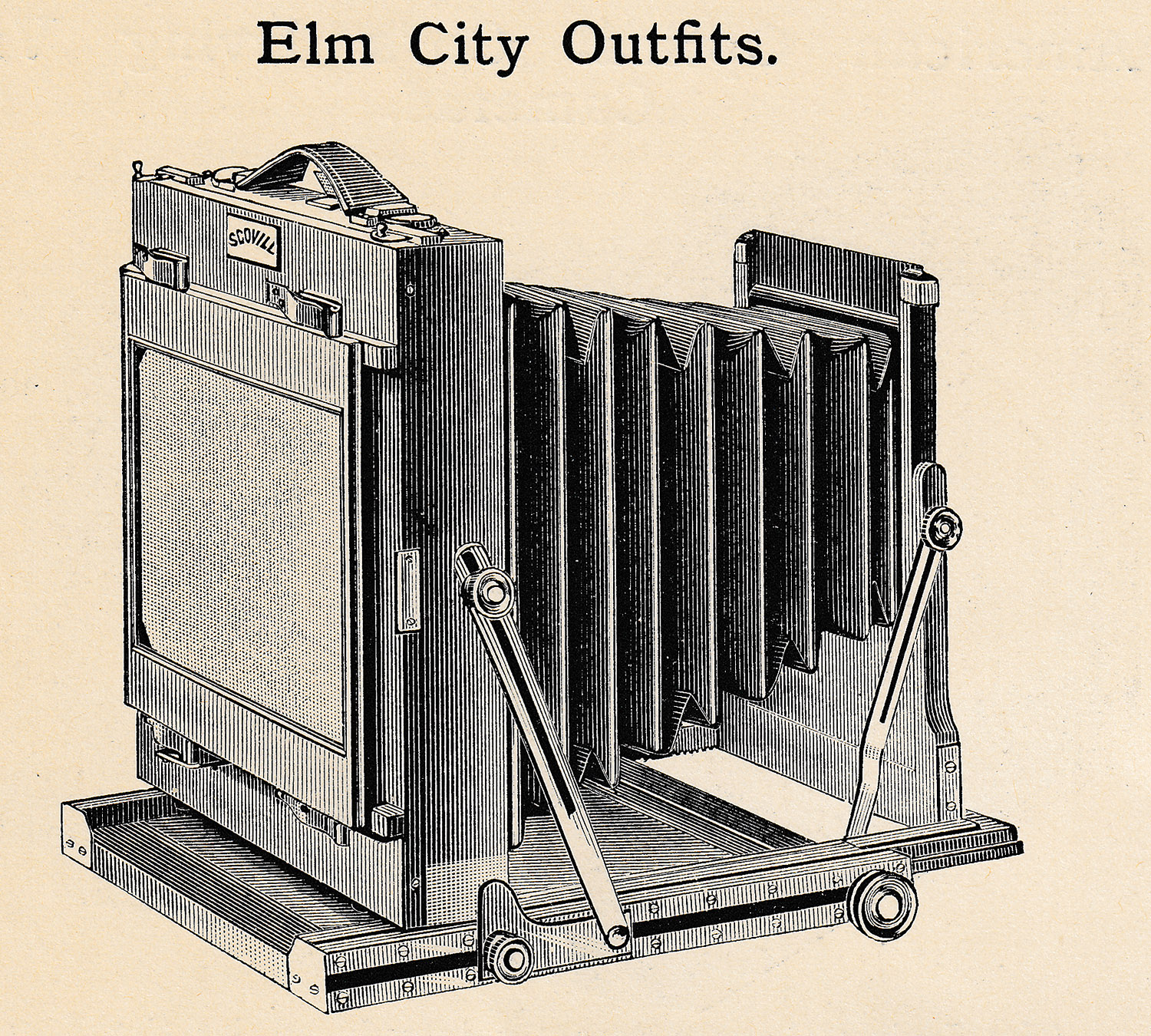
6.5 x
8.5"
Manufacturer:
American Optical Co. New York, NY
factory
Until 2023, the Elm City
Camera was
only known from advertiseing on the American
Annual of Photography and Photographic Times Almanac for 1896 and 1897
"Bargain Page" only, which says "First
quality American Optical's Cameras" (but some
are made by Scovill rather than American
Optical). This
"Bargain Page" seems to be the last reference for a number of models,
which implies 1) that Scovill & Adams discontinued a number of models
around 1896, and 2) that the "Bargain Page" was an outlet for the
left-over stock of these discontinued models, as well as over-stocked
items.
In the 1897 Bargain Page, the list
price of a 6½x8½ Elm City Camera was
$40, compared to the Compact $25; Leader ~$26 (5x8 was $24 and
8x10 was $28); Economic $30; Star View $36; St. Louis
$40; and Flammang Revolving Back $40. The Elm City
would therefore be similar in finish and complexity of design to the
St. Louis and Flammang Revolving Back cameras. The
Elm City would be more complex than the Star View. In 2023, a
catalog was found that illustrated the Elm City Camera/Outfit
in an engraving. The engraving shows that an Elm City Camera
had previously been found in the flesh, but not even marked as to
manufacturer - it was assigned the name of Albion Variation 3,
because it differs from the other Albion variations by a few features
that can be called Americanization rather than a change to the
English-style focusing and compact folding. Accordingly, the
Albion Variation 3 and Elm
City View web pages were
combined into one. The Albion View Camera is
an English Compact
style of camera - hence the name Albion, from
the oldest (and Greek) name for the island of England. English
Compact refers to the clamshell-like way the camera folds up, which
was a design made by a large number of manufacturers in the United
Kingdom. Albion variations 1.0 through 2.0 even have an
English-style flip-up or flip-down ground glass frame, and take English-style plate holders,
which have a recessed groove on their long sides. The insertion
of such holders could be described as sliding into an grooved back, an
arrangement similar to a tongue and groove. Light would have to
make 5 right angle turns to leak from the interlocking parts of the
holder. This style of holder is common for cameras
manufactured in the United Kingdom, but rare in the United States. The only thing that reveals an American
source for the Albion would be the typical Scovill clips that secure the
removable back. There are two platforms: an inner to
which the front standard is attached, and an outer to which the rear
standard is attached. Both standards pivot, either to close up the
camera or to provide tilt from either standard. The inner platform
may be moved either forward or backward via rack and pinion focus, using
one or two (depending on variation) large diameter thumbscrews.
The outer sides of the platform of Variation 1.0 through 1.5 are mostly
wood, whereas Variations 2.0 and 3.0 have a full length slotted metal
guide / reinforcement. Variations other than Variation 3.0 have a
large circular hole in their bottom housing a tripod head. Three
tripod legs fit onto six hefty brass pegs to complete the tripod. It is a high end camera for Scovill
- normally, one would expect such a French-polished, decorated brass
model to have been made by the American Optical Co., Scovill's high-end
manufactory, but Albions were always advertised as Scovill product, and
therefore probably made in the Scovill New Haven, CT factory.
Albion Variation
1.0
has only a small amount of brass hardware on the side of the base/bed.
The front standard is conventional, consisting of a vertical wooden
frame capable of rise movement, and a separate lens board, retained via
a metal strip at the top and a metal flipper at the bottom.
Albion Variation 1.1 is
identical to the Variation 1.0 except that it has all nickel-plated
hardware. Scovill catalogs do not appear to ever say whether the
hardware is brass or nickel-plated. If it follows the rule of
other camera models that appear in both brass and nickel-plated
hardware, the brass version was the earlier variation, and replaced by
the nickel-plated version either when marketing indicated that customers
preferred nickel-plated, or when nickel-plated parts were found to be
less expensive than the labor-intensive draw-filing and varnish method
of finishing brass parts.
Albion Variation 1.5 is
similar to the Variation 1.0 in that 1) its main platform has
mostly wooden sides (rather than clad in slotted brass), and 2) its
removalbe back has the hinged flip-up or flip-down ground glass frame,
and uses English-style plate holders. But its front standard
does not have a removable lens board and secured at its top by a
horizontal metal strip, which also has a vertical slotted section for
rise movement, like all other variations of the Albion. Rather,
the front standard of Variation 1.5 is like Variation 2.0,
in that it has a board the must be removed by pushing it up past the
verical supports until it is completely removed. The same sliding
motion provides rise movement. To lock the rise, the same two
thumbscrews that allow the front standard to tilt backwards for storage
must be used. Fortunately, the rise is rather tightly fitted,
otherwise holding it all in place while tightening the screws might
require more than two hands.
Albion
Variation 2.0 has full length brass hardware on the side of the
base/bed. Inasmuch as the above camera is marked Scovill Mfg. Co.
and one of the observed Variation 2 cameras is marked Scovill & Adams
Co. (the successor to Scovill Mfg. Co.), Variation 2
is though to
represent a later version than Variation 1,
being an improved version having a brass-reinforced side. The
front standard of Variation 2.0 is like Variation 1.5,
in that it has kind of an integral lens board, instead of being easily
removed, like Variation 1.0. In the 1886
Queen catalog reference, a 4¼x5½" size is offered without lens on
pages 84-85, and with a lens for bicycle use on page 77 as The
Wheelman's Perfection Photographic Outfit. Introduced: not in
the
April 1887 catalog, but in the
Sep. 1888 catalog.
Albion
Variation 3.0 - Also called The Elm City View domesticates the
Albion Camera for American use. The built-in
tripod head has been replaced by a tripod screw hole of standard size
and thread pitch. Variation 3.0 also continues the full length brass hardware
along the base/bed, as in Variation 2.0. The
removalbe back now has a four-spring-type (see below) for American-style plate holders. References:
Back to American Optical
Co. / Scovill Mfg. Co. (alphabetical)
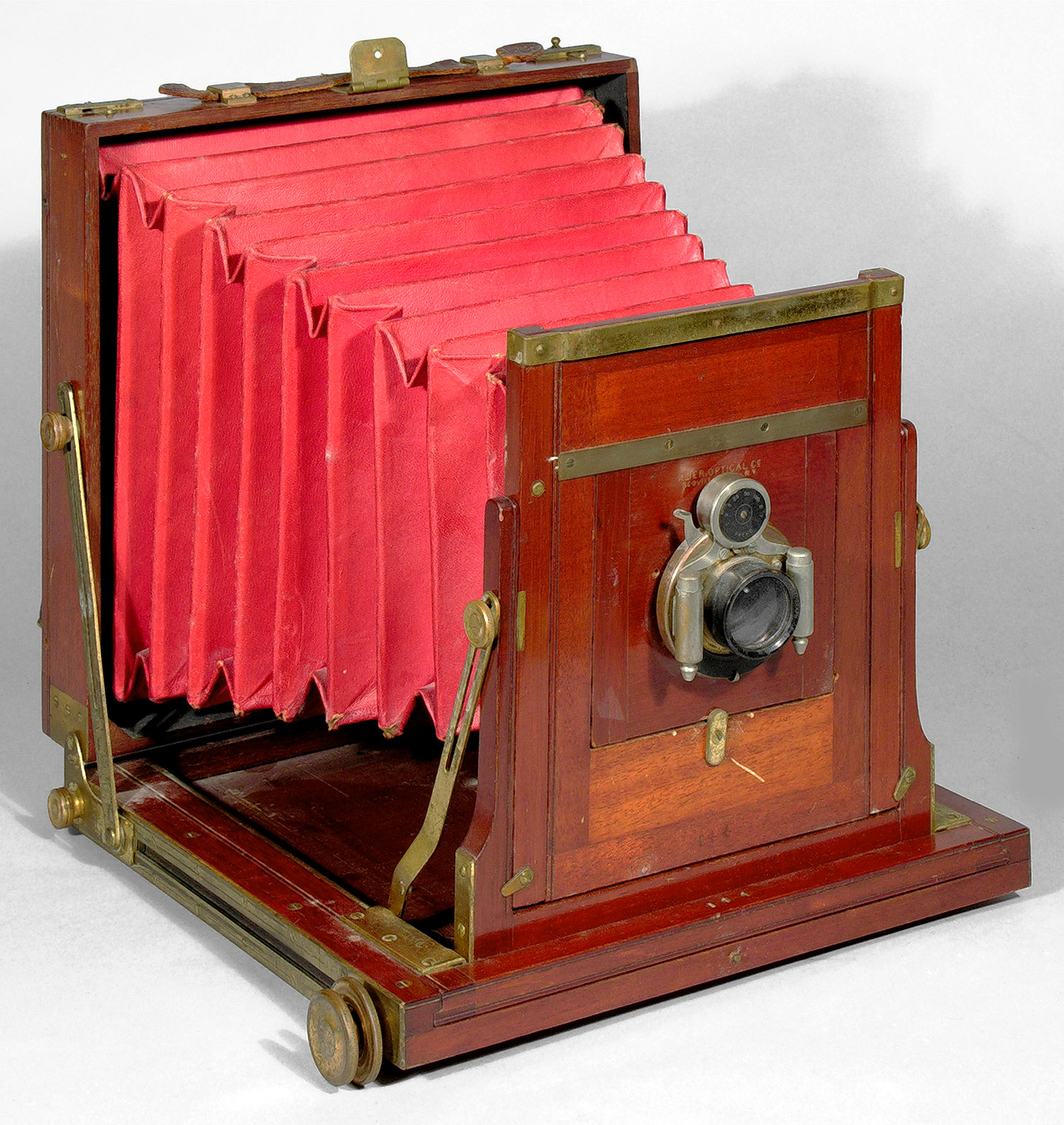
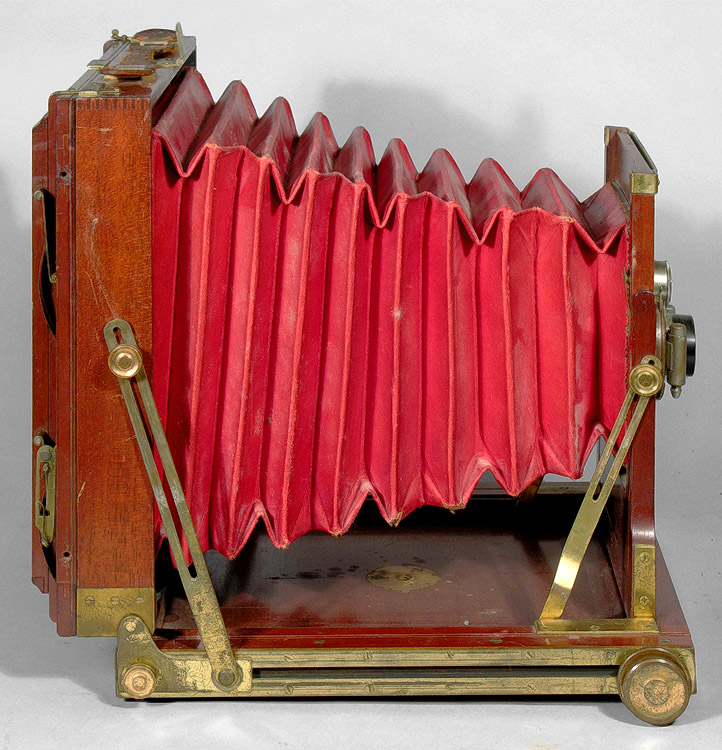

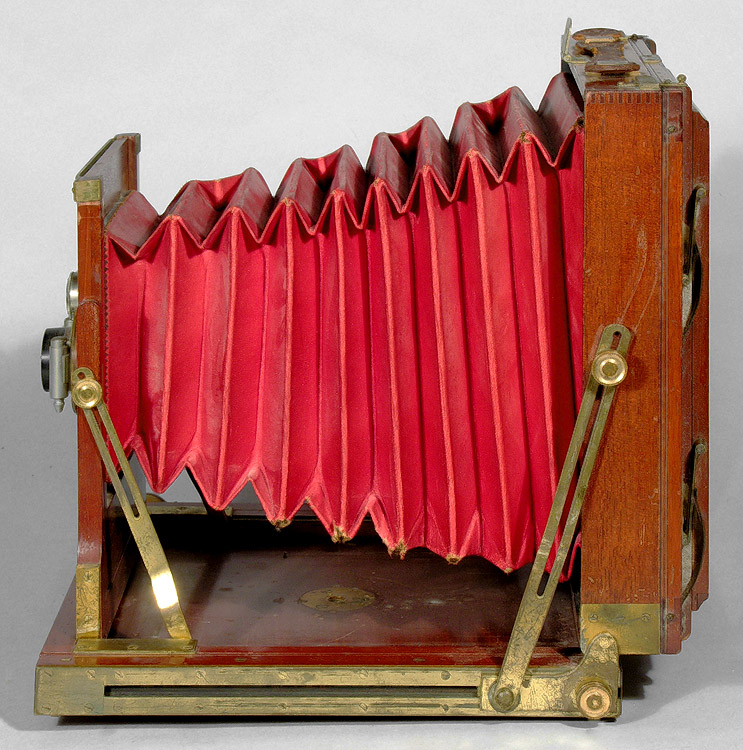
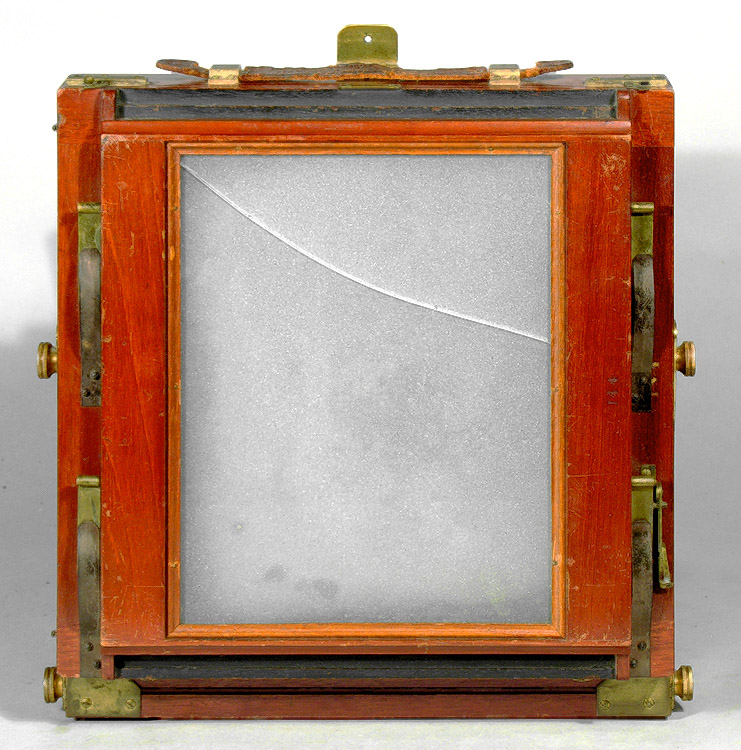
Date Introduced:
Construction:
Materials:
Sizes Offered: at least; 6½x8½
Notes:
Catalogue of Photographic Goods and All
Articles Pertaining to Photography, The Scovill & Adams Co. (New
York, NY), undated c.1895, p.14
American Annual of Photography and Photographic Times Almanac for
1897, The Scovill & Adams Co. (New York, NY),
1896, ads p. 61 ("Bargain
Page")
American Annual of Photography and Photographic Times
Almanac for 1898,
The Scovill & Adams Co. (New York, NY), 1897, ads
p. 115 ("Bargain Page")
